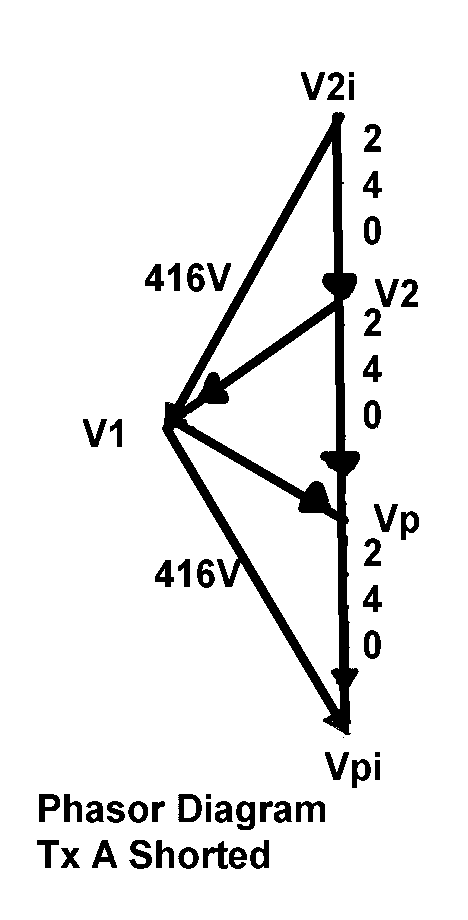Re: Wye - Delta Bank
Rattus,
How did you get 240? if the one primary is shorted then you will have line to line voltages on each remaining phase which results in 240*1.732=416 on the secondaries of the good transformers and zero on the shorted one.
I guess I am not following you here. what do you mean be external fault?
Rattus,
How did you get 240? if the one primary is shorted then you will have line to line voltages on each remaining phase which results in 240*1.732=416 on the secondaries of the good transformers and zero on the shorted one.
I guess I am not following you here. what do you mean be external fault?


